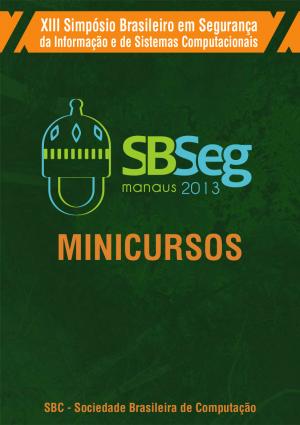Minicursos do XIII Simpósio Brasileiro de Segurança da Informação e de Sistemas Computacionais
Palavras-chave:
Segurança da Informação, Sistemas Computacionais, Minicursos do SBSeg 2013, SBSeg 2013Sinopse
O Simpósio Brasileiro em Segurança da Informação e de Sistemas Computacionais (SBSeg) é um evento científico promovido anualmente pela Sociedade Brasileira de Computação (SBC). Nesta edição do SBSeg 2013, de um total de 10 submissões de propostas de minicursos foram selecionados quatro minicursos, representando assim uma taxa de aceitação de 40%.
Este livro reúne então 4 capítulos produzidos pelos autores das propostas de minicursos aceitas. O Capítulo 1 apresenta técnicas e recursos antiforense para a proteção de informações sensíveis, mas não para ocultar provas e evidências de atos ilícitos; O Capítulo 2, além de introduzir noções básicas das principais linhas de pesquisa pós-quântica, apresenta os estudos mais recentes nesta área visando a melhorias dos esquemas relacionados a tamanhos de chaves, overhead de assinaturas e criptogramas; O Capítulo 3 aborda a área de Segurança de Software com uma visão geral e mostra como adaptar e avaliar as soluções existentes no contexto de Sistemas Embarcados; Por fim, o Capítulo 4 descreve os principais desafios e soluções de segurança para prover autenticação e autorização na Internet das Coisas.
Capítulos
-
1. Antiforense Digital: conceitos, técnicas, ferramentas e estudos de caso
-
2. Introdução à criptografia pós-quântica
-
3. Segurança de Software em Sistemas Embarcados: Ataques & Defesas
-
4. Infraestruturas de Autenticação e de Autorização para Internet das Coisas
Downloads



